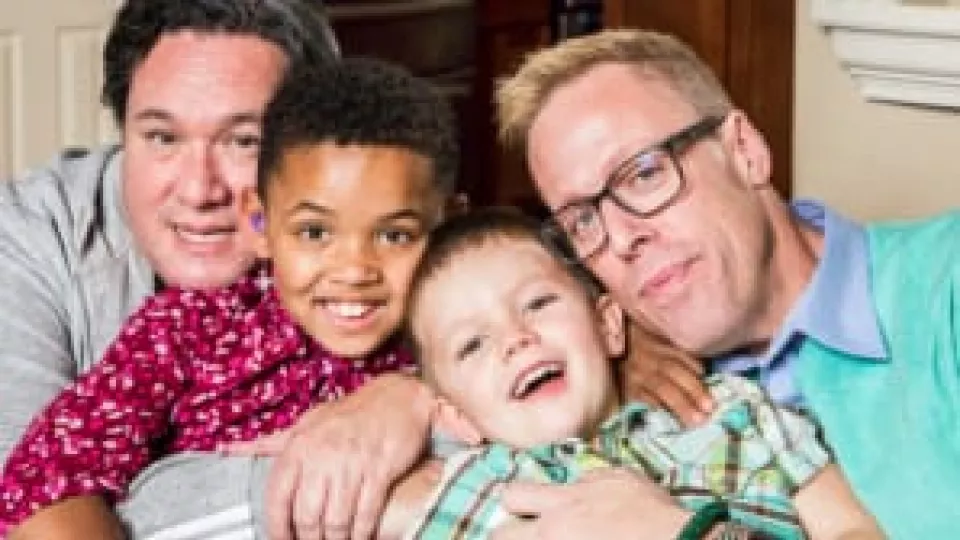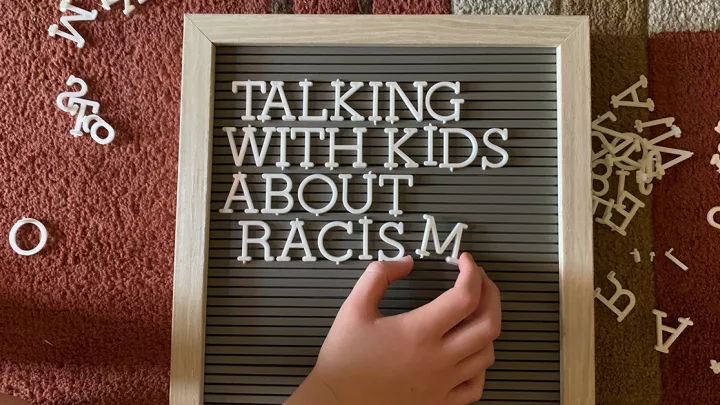
Talking to Your Child About What It Means to Identify as Lesbian, Gay, Bisexual or Transgender (LGBT)
Kids often ask their parents questions that they feel uncomfortable about or unprepared to answer. Children may learn about LGBT people through their friends, in the media, or by knowing an LGBT adult in their lives. They may hear certain words or terms at school or on TV, but not know what they actually mean. Social media has been a catalyst for social change, acceptance and inclusivity among preteen and teenage youth. However, kids still look to their parents for guidance about gender identity and sexual orientation. By talking with your child at a young age about sexual orientation and gender identity, you can teach them the value of empathy and respect for others, as well as open the door for any future conversations regarding their own identity (we will dive into this topic in our next article).
Unfortunately, there aren’t many resources to help parents learn how to have these conversations with their kids in an informative and non-judgmental way. I spoke with my colleague, John Thompson, MSW, in the Division of Adolescent and Young Adult Medicine, to create a guide on how to talk to your child about LGBT issues.
“Breaching the topics of sexual orientation and gender identity with a child can be an anxiety-provoking thought for many parents,” says Thompson. “I’ve seen many parents shy away from these conversations, mostly out of fear that this will lead to discussions about sex that they feel may be inappropriate for the child’s age. This usually speaks to the parents’ own discomfort and lack of knowledge about the subject. In order to create an environment that embraces curiosity, normalizes difference, and encourages respect, it’s important for parents to do some self-reflection and self-education.”
To have a good discussion with your child about this topic, it is important to understand certain terms. Most people are aware of the basic definitions that compromise the abbreviation of LGBT; however there is a lot of terminology under this umbrella that you might not be as familiar with. One of the most misunderstood ideas is the difference between sex, gender, gender identity, gender expression and sexual orientation. The LGB part of the abbreviation references sexual orientation, while the T represents gender identity.
Sex assigned at birth: Usually assigned by a medical provider based on biological anatomy present at birth, i.e., male, female, or intersex (a term used to describe a variety of medical conditions where a person is born with sexual anatomy that doesn’t fit the typical definitions of female or male).
Gender: The feelings, behaviors and attitudes that each culture attributes to a person’s biological sex. Ex. girls wear pink and play with dolls; Boys wear blue and play with trucks.
Gender identity: The gender a person feels they are inside. Only the individual can say what their gender identity is. Children generally know their gender identity by age 5.
Gender expression: How someone shows his or her gender to the others. I.e., what clothes you wear; if you wear makeup or not.
Lesbian: A woman who is sexually attracted to another woman.
Gay: Usually used to refer to a man who is sexually attracted to another man, but can also be used to describe a person who is attracted to someone of the same sex.
Bisexual: A person who is sexually attracted to men and women.
Pansexual: A person who is sexually attracted to all people regardless of gender identity.
Asexual: A person who is not sexually attracted to any person regardless of gender identity.
Transgender: A person whose gender identity does not match their sex assigned at birth.
Gender non-conforming: A person who identifies as both genders, either gender or somewhere along the gender continuum.
Cisgender: Those whose experiences of their own gender agree with the sex they were assigned at birth.
Now that we have a basic understanding of common LGBT terms, here are some tips on how to talk to your child about these concepts.
- Start early. Having open, age-appropriate discussions at an early age will leave the door open for further conversations as your child gets older.
- Listen. This will help you make sure you understand what your child is asking and what they already understand about the subject.
- Be honest. Answer questions truthfully, but keep in mind your child’s developmental age. Be honest if you don’t know the answer to a question. Encourage your child to continue asking questions.
- Ongoing discussion. This shouldn’t be a one-time conversation. Use media and/or life experiences as opportunities to re-engage your child into further discussions as they develop.
- Age-appropriate information. Consider using children’s books or videos that discuss gender identity and/or sexual orientation. The television show Steven Universe and books like And Tango Makes Three or I am Jazz are great ways to start conversations. Give information based on your child’s development age. Below are some suggestions on how to talk to your child.
- Pre-school age (age 3-5) – This age group is only able to understand simple and concrete answers to questions. When answering, use language your child understands. Try to only address the specific question asked, without giving any further details. For example, if your child asks why their friend from school has two mommies, you can say, “Families can be different. Some families have a mom and a dad. Some have two moms or two dads. Some have only one mom or one dad.”
- School age (age 6-12) – Children at this age are beginning to explore and understand who they are in the world. As their questions about gender and sex become more complex and concrete, so should your answers. For example, your child may witness bullying of other classmates, and come to you for advice on how to respond. This is an opening to reinforce the value of treating others with respect. I.e., Your child tells you, “Tiffany cut her hair short and all the other kids were teasing her. Does that mean she’s a boy?” You could reply, “Having short hair does not make you a girl or a boy. How did you feel when you saw the other kids teasing her?”
- Teenage (13-18) – As children become teenagers, not only does their sexual orientation become apparent; their friends’ will too. Your children might ask questions as some of their classmates begin to be more open about their gender identities or sexual orientation. Teens may be using this conversation as a way to feel out your reaction to their friend’s “coming out.” However, also use this opportunity to really listen to how teens think and feels about LGBT people. Try to limit any judgments about things you don’t understand or don’t agree with. For example, if your child tells you that his friend is gay, ask what his thoughts and feelings are about it first before expressing your opinions.
By using some of these helpful tips, John and I hope that you will feel more prepared to speak with your children about people who identify as LGBT. It’s key to remember that you might not ever feel completely ready for this talk, but try to relax and answer questions honestly. This conversation can be a good way to teach your children about your values while learning about theirs. Being someone your kids can come to for honest answers will make future difficult conversations easier. If you’re ever unsure of how to answer a question, reach out to your children’s medical provider, a licensed mental health provider or your local LGBT center.


